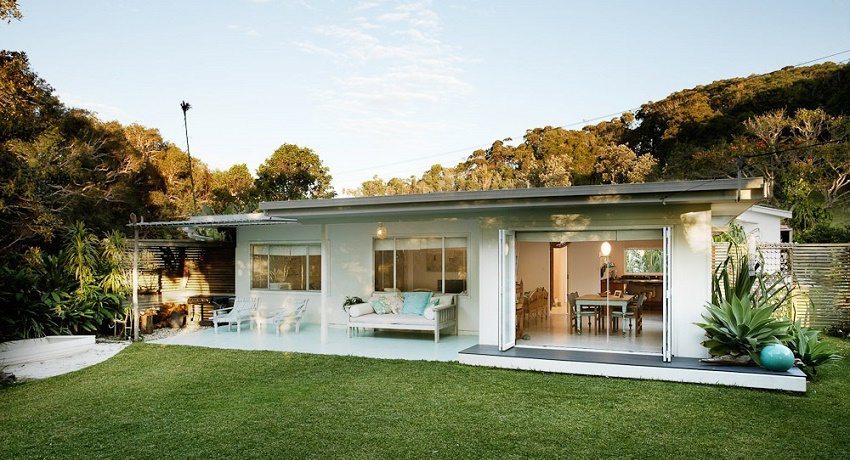Where to fit the knee of the drain pipe
Normally this pipe should go straight, so the probability of clogging is significantly reduced. However, if a special grid is located in the funnel, which detains leaves fallen from trees and other debris that can be carried by wind to the roof, the drain pipe bend is completely usable. As already mentioned, a couple of turns sometimes have to be done under the roof overhang to connect the funnel and the pipe, which is fixed to the wall with clamps.
It also happens that the slope of the drain is necessary to bypass the cornices and small awnings, as well as visors and reinforced belts. If it is not possible to continue the excavation in the obstruction( for example, due to the abundance of metal in the same reinforced belt), the bypass maneuver is performed using the knee. Otherwise, the bends should be as small as possible, especially when the installation of internal gutters is performed - a phenomenon quite rare for country houses, since the roof should be flat.
How to mount the drainpipes
So, with the gutter roof you already girded, the funnel was installed in the first place, it only remains to install the gully itself. If you work with a plastic system, there is nothing easier, it is enough to take a tube of special glue( and a few in reserve), so that all elements are connected qualitatively and, most importantly, firmly. To connect the metal elements will have to tinker, since folding is not always appropriate, more often requires low-temperature brazing or even welding. So let's go in a simpler way and consider fixing the drainpipes from polymers.
To the ground from the outlet of the drain, there must be at least 30 centimeters, and if there is a point-type rainwater intake on the bottom, then the height of the drain hole should be 15 centimeters.
To the funnel, we glue the first knee, between the first and second knee( necessary for turning the drain vertically downwards), the gutter pipes of the required length are installed, without the participation of glue substances. Further all connections are also carried out without any components, only with the help of a coupling, and so that the distance between the drain pipes is not less than 2 millimeters. However, if a knee is to be used on any site, they are glued to both straight-line elements and to each other.
Installation of drainpipes on the wall
Never drain the drain against the wall. For its installation, special clamps are used, which allow the installation of drain pipes with a certain gap between them and the wall surface. Depending on the material from which this surface is made, for the metal drain, you can use the clamps on the legs or with the pin. The first are installed using screws or dowels, while the latter are pushed into the wall. Plastic pipes and clamps are used for plastic pipes.
The gap between the fastenings should be within 1-2 meters, it can differ depending on which series of gutters you install and who its manufacturer is. Do all you need according to the instructions that came with the kit. On the wall, the clamps for fixing the drainpipes are installed in advance, for straightness it is desirable to use a plumb. Then you can insert the tube into the open ring of the yoke, then fix the detachable section of its circumference.


